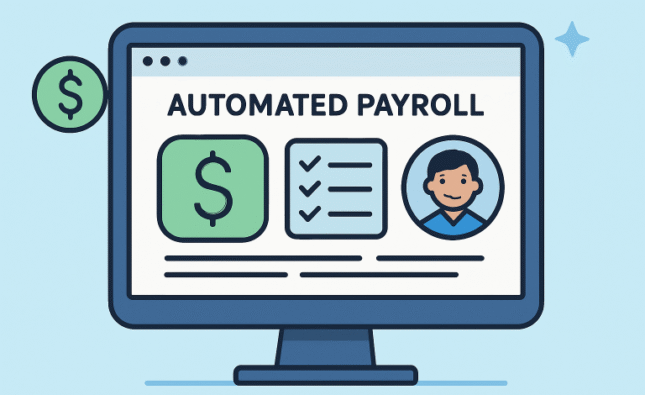Starting your own online business can be a rewarding endeavor, offering the freedom to work from anywhere and the potential to reach a global audience. Whether you’re looking to supplement your income or create a full-time venture, this Ultimate Guide to Starting Your Own Online Business Lyricsbaazaar.com will walk you through the essential steps to get your online business off the ground.
Identify Your Niche
Finding Your Passion and Market Demand
Before diving into the technical aspects, it’s crucial to identify a niche that aligns with your passions and has market demand. Your niche is the foundation of your business; it’s where you will position yourself in the market and whom you will serve. Research trends, analyze competitors, and consider your unique strengths and interests. Tools like Google Trends, social media platforms, and market research reports can help you understand what people are looking for and where gaps exist in the market. Reflect on your hobbies, skills, and professional experience to find a niche that resonates with you and potential customers.
Evaluating Profitability
Once you’ve identified a potential niche, evaluate its profitability. Look at existing products or services, pricing models, and customer feedback. Determine if there’s room for innovation or if you can offer a superior product or service. This step ensures that your business idea is viable and has the potential for long-term success. Consider the costs associated with entering the niche, potential profit margins, and the scalability of your business. Conduct surveys, focus groups, or pre-launch campaigns to gauge interest and willingness to pay for your product or service.
Create a Business Plan
Setting Clear Goals
A solid business plan is your roadmap to success. Outline your business goals, target audience, value proposition, and marketing strategy. Define both short-term and long-term objectives to keep you focused and motivated. Your goals should be Specific, Measurable, Achievable, Relevant, and Time-bound (SMART). A well-defined business plan helps you stay organized, attract investors, and manage your resources efficiently. Include a mission statement, vision, and core values that guide your business operations and decision-making.
Financial Planning
Detail your startup costs, funding sources, and projected revenue. Consider costs like website development, marketing, inventory, and any tools or software you may need. Having a clear financial plan helps you manage your budget and ensures you’re prepared for any unexpected expenses. Outline your pricing strategy, sales forecast, and break-even analysis. Explore different funding options, such as personal savings, loans, grants, or venture capital. Create a cash flow statement to track your income and expenses over time.
Choose a Business Structure
Understanding Your Options
Your business structure affects your legal responsibilities, taxes, and personal liability. Common structures include sole proprietorship, partnership, limited liability company (LLC), and corporation. Each has its pros and cons, so it’s important to choose the one that best fits your business goals and needs. A sole proprietorship is the simplest and cheapest option, but it offers no personal liability protection. An LLC provides limited liability protection and flexible tax options, while a corporation offers the most liability protection and potential for raising capital but requires more compliance and paperwork.
Registering Your Business
Once you’ve chosen a structure, register your business with the appropriate government authorities. Obtain any necessary licenses and permits to operate legally. This step varies by location and industry, so check local regulations to ensure compliance. Register your business name and secure a domain name that reflects your brand. Apply for an Employer Identification Number (EIN) if you plan to hire employees or open a business bank account. Maintain accurate records of your business activities and stay up-to-date with tax and regulatory requirements.
Build Your Online Presence
Creating a Professional Website
Your website is the face of your online business. Invest in a professional, user-friendly design that reflects your brand. Platforms like WordPress, Shopify, and Wix offer customizable templates and easy-to-use interfaces for building your site. Ensure your website is mobile-responsive, loads quickly, and provides a seamless user experience. Include clear navigation, compelling visuals, and high-quality content that engages your audience. Your website should showcase your products or services, highlight customer testimonials, and include a blog to share valuable insights and establish your authority in the niche.
Optimizing for Search Engines
Search engine optimization (SEO) is crucial for driving organic traffic to your site. Research relevant keywords and incorporate them into your content, meta descriptions, and tags. Quality content, fast load times, and mobile-friendliness also improve your search rankings. Create an SEO strategy that includes on-page and off-page optimization, backlink building, and local SEO if applicable. Use tools like Google Analytics and Google Search Console to monitor your website’s performance and identify areas for improvement. Regularly update your content and website to stay relevant and maintain high search engine rankings.
Develop a Marketing Strategy
Utilizing Social Media
Social media platforms are powerful tools for reaching your target audience. Choose platforms that align with your niche and audience preferences. Regularly post engaging content, interact with followers, and utilize paid advertising options to increase your visibility. Develop a social media calendar and content strategy to ensure consistent and relevant posts. Use a mix of content types, such as images, videos, infographics, and stories, to keep your audience engaged. Collaborate with influencers and brand advocates to expand your reach and credibility. Monitor social media analytics to measure the effectiveness of your campaigns and adjust your strategy accordingly.
Email Marketing
Building an email list allows you to directly reach potential customers. Offer incentives like discounts or free resources to encourage sign-ups. Send regular newsletters with valuable content, promotions, and updates to keep your audience engaged and drive sales. Segment your email list based on customer behavior and preferences to deliver personalized messages. Use email marketing platforms like Mailchimp, Constant Contact, or ConvertKit to automate your campaigns and track their performance. Focus on creating compelling subject lines, engaging content, and clear calls to action to maximize your email marketing ROI.
Source or Create Products
Finding Suppliers
If you’re selling physical products, find reliable suppliers. Platforms like Alibaba, Oberlo, and SaleHoo can connect you with manufacturers and wholesalers. Evaluate their product quality, pricing, and delivery times to ensure they meet your standards. Request samples, read reviews, and verify their credentials before making a decision. Establish clear communication and terms of agreement to avoid misunderstandings and ensure timely deliveries. Consider partnering with local suppliers to reduce shipping costs and support your community.
Creating Your Own Products
If you’re creating your own products, focus on quality and differentiation. Whether you’re crafting handmade items, developing software, or offering unique services, your product should stand out in the market and meet customer needs. Conduct thorough research and testing to ensure your product is functional, reliable, and user-friendly. Consider customer feedback and iterate on your product to continuously improve it. Protect your intellectual property by obtaining patents, trademarks, or copyrights if applicable.
Set Up Payment and Shipping
Choosing Payment Gateways
Select secure and convenient payment gateways to handle transactions. Popular options include PayPal, Stripe, and Square. Ensure your website supports multiple payment methods to cater to different customer preferences. Provide clear information about payment options, security measures, and refund policies to build trust with your customers. Use encryption and secure socket layer (SSL) certificates to protect sensitive data and prevent fraud.
Shipping Solutions
For physical products, partner with reliable shipping providers. Consider shipping costs, delivery times, and international shipping options. Providing tracking information and multiple shipping options can enhance the customer experience. Negotiate shipping rates with carriers to reduce costs and offer free shipping or flat-rate shipping to attract more customers. Use shipping software to automate label printing, order tracking, and inventory management When expanding your online business and needing to handle logistics, using a man and a van service like Shiply can simplify the delivery of goods to customers efficiently and affordably.
Launch and Promote Your Business
Testing Your Website
Before launching, thoroughly test your website to ensure everything works smoothly. Check for broken links, ensure the checkout process is seamless, and verify that all features function as expected. Conduct usability testing with real users to identify any issues and gather feedback. Use A/B testing to compare different versions of your website and optimize for conversions. Ensure your website is secure, backed up, and compliant with data protection regulations.
Launching with a Bang
Plan a launch strategy to create excitement and attract initial customers. Utilize social media, email marketing, and online ads to spread the word. Offer launch promotions or giveaways to incentivize purchases and generate buzz. Collaborate with influencers, bloggers, and media outlets to gain exposure and credibility. Host a virtual launch event, webinar, or live stream to engage with your audience and showcase your products or services. Track the performance of your launch campaign and adjust your strategy based on the results.
Monitor and Adapt
Tracking Performance
Use analytics tools like Google Analytics to monitor your website traffic, conversion rates, and customer behavior. Track key performance indicators (KPIs) to measure your business’s success and identify areas for improvement. Set up goals and funnels to understand how visitors navigate your website and where they drop off. Use heatmaps and user recordings to gain insights into user behavior and optimize your website’s design and content. Regularly review your financial statements, sales reports, and customer feedback to identify trends and make informed decisions.
Adapting to Change
The online business landscape is constantly evolving. Stay informed about industry trends, customer preferences, and technological advancements. Be ready to adapt your strategies and offerings to remain competitive and meet changing demands. Continuously learn and improve by attending webinars, reading industry blogs, and networking with other entrepreneurs. Experiment with new marketing tactics, products, and services to keep your business fresh and innovative. Foster a culture of flexibility and resilience within your team to navigate challenges and seize opportunities.
Conclusion on The Ultimate Guide to Starting Your Own Online Business Lyricsbaazaar.com
According to Lyricsbaazaar.com, Starting your own online business requires careful planning, dedication, and a willingness to learn and adapt. By following these steps, you can build a strong foundation for your business and increase your chances of success. Remember, every successful entrepreneur started with an idea and a commitment to turning that idea into reality. With persistence and the right strategies, you can achieve your online business goals and enjoy the freedom and rewards that come with being your own boss.













